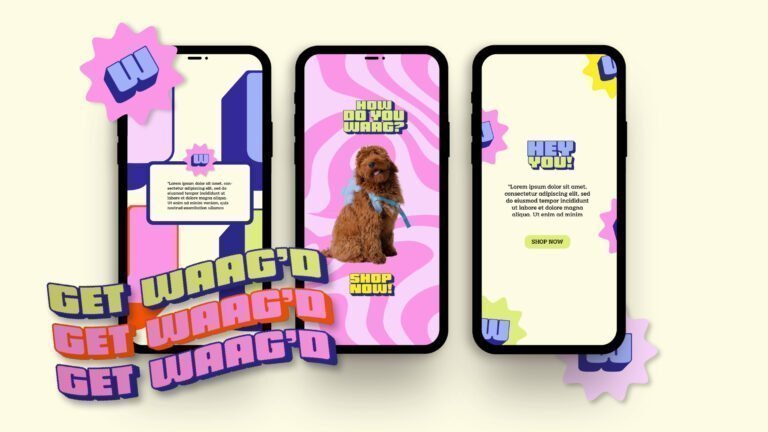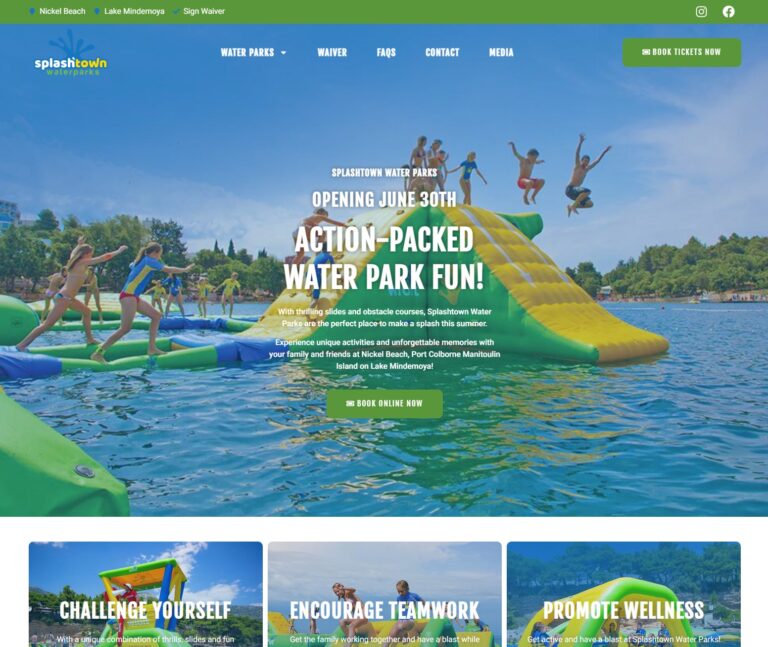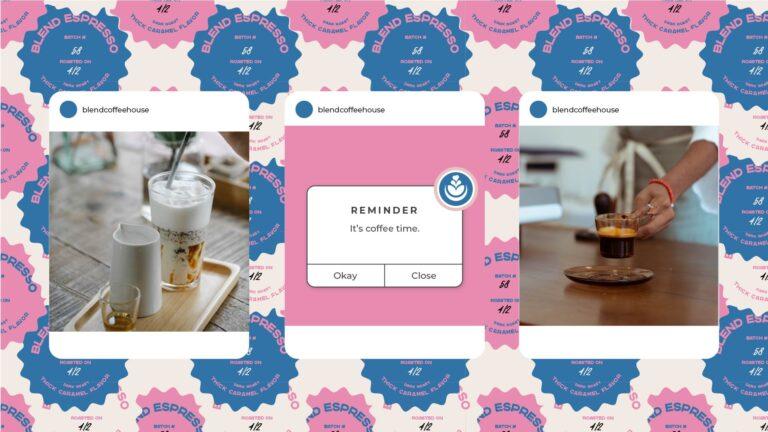Graphic design is a competitive field that requires skilled professionals to win clients over and make sales. However, it’s not just about creating visually appealing designs or having a large portfolio of work. To succeed in the graphic design industry, one must also master the art of closing sales calls.
Importance of Closing Sales Calls in Graphic Design
Closing a sales call is the final step in convincing a potential client to work with your company. It involves persuading them to make a commitment and sign a contract for your services. Without effective closing techniques, you risk losing valuable business opportunities that could have otherwise helped grow your company.
In graphic design specifically, closing sales calls is crucial because it ensures that your clients are satisfied with the work you deliver and are willing to continue working with you on future projects. Additionally, by building positive relationships with clients through successful sales calls, you can gain valuable referrals and increase your visibility within the industry.
Overview of Tips and Strategies to be Discussed
In this article, we will discuss some key tips and strategies for maximizing success when closing graphic design sales calls. We will begin by highlighting the importance of pre-call preparation, including researching your client’s needs and preferences, preparing tailored pitches, and setting clear goals for the call. Next, we will dive into building rapport with clients by greeting them professionally, asking open-ended questions to better understand their needs, actively listening to their responses with empathy – all while presenting our services effectively using demonstrations from our portfolios or case studies when necessary.
We’ll also provide insight into proven techniques for overcoming objections while summarizing key points/benefits of our services as well as offering incentives or limited-time offers towards encouraging an agreement! – Follow-up tactics such as personalized thank-you notes after calls can help cement new partnerships firmly in place while reinforcing existing ones so they remain fruitful for years to come.
Pre-Call Preparation
Researching the client’s needs and preferences
Before making a sales call, it’s essential to do your homework and gather information about the prospective client. Researching their business history, industry, competitors, and even their social media accounts can provide valuable insight into their needs and preferences.
Understanding their goals, challenges, and pain points will help you tailor your pitch to meet their specific needs. Additionally, researching the individual you’ll be speaking with can help you build rapport and establish a connection during the call.
LinkedIn is an excellent resource for this as it provides professional profiles that will give you an idea of the person’s work history, interests, common connections or accomplishments. Make sure to document all of your research findings in a CRM like Salesforce or HubSpot so that it’s easily accessible for future reference.
Preparing a tailored pitch
Once you’ve gathered all the relevant information about the client’s needs and preferences, use this information to develop a tailored pitch that highlights how your services can solve their problems or meet their goals. The pitch should be customized for each individual client—avoid using generic language as it may not resonate with them.
The structure of your pitch should reflect what you learned during research; this could include highlighting some specific challenges they face in relation to graphic design or mentioning projects they’ve worked on that might require similar design solutions. By letting them know upfront why you are calling them specifically (beyond just looking for new business) will demonstrate that you are interested in providing value rather than just selling something.
Setting clear goals for the call
Before making any sales calls as part of your graphic design services marketing efforts , set clear goals for what you hope to achieve during each interaction with prospective clients. It’s important to have realistic expectations; not every call will result in closing deals, but that doesn’t mean they aren’t valuable.
Begin by identifying your primary objective for the call. Do you want to:
– Schedule a follow-up meeting or demo? – Get feedback on a new service offering?
– Close a deal? Once you’ve established your main goal, set some secondary ones that will help you move closer to achieving it.
For example, if your primary goal is to close a deal, secondary goals could be to learn more about the project requirements or assess any potential objections. By having clear goals in mind before making the call, you’ll be better prepared and more focused during the conversation.
Building Rapport with the Client
Greeting the client warmly and professionally
The greeting sets the tone for the remainder of your sales call. Therefore, it is important to make a good first impression.
Consider starting with a warm greeting such as “Hello, thank you for taking the time to speak with me today.” Make sure that your tone of voice is friendly and professional. By doing so, you are immediately showing respect for their time and building rapport.
Asking open-ended questions to understand their needs better
Asking open-ended questions is an essential part of building rapport with clients during sales calls. Open-ended questions require more than a ‘yes’ or ‘no’ response and allow clients to share their thoughts about their needs and preferences. For example, instead of asking “Do you need graphic design services?” try asking “Tell me more about what prompted you to seek graphic design services at this time.” This approach encourages clients to share more information and helps you fully understand their needs.
Active listening and responding with empathy
Active listening involves focusing intently on what the client is saying without interruption or distraction. Responding with empathy means acknowledging what they are saying by reflecting back emotions they may be experiencing or showing understanding of their situation.
For instance, if a client shares that they are struggling with branding identity for their company, respond by saying something like “I hear how important branding identity is to your company’s growth”. By doing so, you show that you understand how much this issue means to them.
Building rapport during sales calls starts from making a good first impression through warm greetings. Asking open-ended questions allows clients to share more information about themselves which can help in identifying areas where they need help from a graphic designer while active listening creates trust between both parties which can lead to closing successful deals in the future.
Presenting Your Services Effectively
Highlighting your Unique Selling Proposition (USP)
Your Unique Selling Proposition (USP) is what sets you apart from all other designers. This is what makes your work stand out and what makes clients choose you over others.
To present your services effectively, you need to identify and highlight your USP. Identify the qualities that make your work unique, such as your design style, approach to problem-solving, or experience working with a specific industry.
To create an effective USP, start by researching the competition. Look at their portfolios and websites to gain insight into their approach and design style.
Identify gaps in the market that you can fill with your unique skill set. Use this knowledge to develop a concise statement that articulates what sets you apart from other graphic designers.
Demonstrating Your Expertise Through Case Studies or Portfolio Examples
Demonstrating expertise is crucial when presenting graphic design services effectively. Clients want to feel confident that they are working with a skilled professional who can deliver on their expectations. One way to demonstrate expertise is by showcasing successful case studies or portfolio examples.
Case studies provide tangible evidence of how you have helped clients achieve their goals in the past. They showcase how you identified client needs, developed solutions, and achieved measurable results through strong design practices.
Portfolio examples demonstrate your creative skills and showcase how good design can enhance a brand’s visual identity. When presenting these examples, be sure to explain the thought processes behind each project’s success and apply them directly to the client’s needs at hand.
Addressing any Concerns or Objections the Client May Have
Addressing concerns or objections proactively during a sales call demonstrates confidence in yourself as a designer and indicates that you care about meeting clients’ needs fully. Common objections encountered in graphic design sales calls include budget limitations, misaligned expectations, and fear of being taken advantage of.
To address budget limitations, you can propose alternative pricing structures or prioritized services to stay within the client’s budget. To address misaligned expectations issues, you can clarify your design process so that clients understand how you approach projects.
Establishing trust through transparency and effective communication can alleviate fears of being taken advantage of. By addressing these concerns head-on, you demonstrate your expertise in graphic design and establish yourself as a trusted partner throughout the design process.
Closing Techniques
Summarizing key points and benefits of your services
After presenting your pitch, it’s essential to recap the key points and benefits of your services before asking for the client’s commitment. This closing technique helps reinforce what you have discussed and reminds the client why they should work with you. Start by summarizing their needs and pain points, then move on to how your services can address those issues effectively.
Make sure to highlight your unique selling propositions (USPs) that differentiate you from competitors. For instance, you could say: “So, based on our conversation today, I understand that you are concerned about improving brand awareness and customer engagement while keeping costs low. Our graphic design services help achieve this goal by developing visually appealing designs that resonate with your target audience. We specialize in creating custom-made logos that reflect your brand values while ensuring brand consistency across multiple platforms.”
Offering incentives or limited-time offers to encourage action
Another effective closing technique is offering incentives or limited-time offers to encourage action from clients. A bonus offer can be anything from a discount on their first project, free consultation sessions or add-on services at no extra cost. The aim is to motivate them to choose your services over others in the market.
For example: “As a token of our appreciation for considering our graphic design services, we would like to offer a 10% discount on all projects if you sign up within the next seven days.” A limited-time offer creates a sense of urgency and makes clients feel like they’re getting exclusive treatment while also encouraging them to make decisions quickly without second-guessing themselves.
Asking for commitment through a clear call-to-action
After summarizing key points/benefits and offering incentives/limited-time offers, it’s time to ask for the client’s commitment through a clear call-to-action. This is the most crucial step in closing a graphic design sales call because it determines if the client will work with you or not. Your call-to-action should be clear, concise, and specific.
For example: “Based on our conversation today, it seems that our services align with your needs and goals. Can I send over a proposal outlining the scope of work and project timeline? If everything meets your expectations, we can move forward with signing a contract to get started.” By asking for a specific next step and offering to send over additional information to help them consider their decision, you’re showing your commitment to helping them achieve their goals while also demonstrating your professionalism and expertise in graphic design.
Overcoming Objections
Identifying common objections in graphic design sales calls
Even the most skilled graphic design salesperson will encounter objections from potential clients during a sales call. These objections can be related to the quality of your work, pricing, timelines, or other concerns that clients may have.
It’s crucial to identify these objections early and address them in a clear and concise manner. Common objections may include “We don’t have the budget for this project,” “Your portfolio doesn’t match our style,” or “We’re not sure if your work is up to par.”
Providing solutions that address their concerns
Once you’ve identified what your client’s concerns are, it’s important to offer solutions that address these issues directly. For example, if a client is concerned about pricing, offer flexibility with payment plans or try to find cost-saving alternatives like using free stock photos instead of custom photography.
If the client is worried that your portfolio doesn’t match their style or needs, offer more examples of relevant case studies or show how you can adapt your style to fit their specific needs. Moreover, try to understand their perspective and tailor your offering accordingly.
Many clients are looking for agencies who understand their unique challenges and can tailor their design approach accordingly. Work with them on determining what aspects of the project are most important for them and explain how you will meet those requirements.
Reiterating the benefits of working with you
Once you have addressed a client’s concerns effectively and provided tailored solutions, it’s time to remind them why they should choose to work with you over any other option they might be considering. Consistently reiterating the benefits of working with your firm throughout the call can remind them about how hiring an agency could lead to long-term savings through increased brand recognition as well as access creative talent on demand.
Ensure the client understands your unique selling proposition (USP) and how it provides value to them. Highlighting your USP will help you stand apart from competitors and demonstrate why you should be their top choice for design services.
Always remember that clients are looking for results, not just a pretty website. By emphasizing the benefits of working with you, you can convince clients that your agency is the best option for their needs.
Follow-Up Strategies
Sending a Personalized Thank-You Note After the Call
The follow-up process is just as important as the sales call itself. A personalized thank-you note is a great way to show gratitude for the potential client’s time and interest in your services.
It also keeps your brand top of mind and demonstrates professionalism and attention to detail. When writing a thank-you note, make sure to include specific details from your conversation with the client.
Reiterate key points that were discussed, highlight any action items or next steps, and emphasize how you can help them achieve their goals through your services. It’s also important to personalize each note and make it stand out from generic templates or automated messages.
Consider adding a graphic design element that ties back to your brand or the client’s industry. A thoughtful gesture like this can leave a lasting impression and set you apart from competitors who may not put in the extra effort.
Conclusion
Closing graphic design sales calls successfully requires thorough preparation, effective communication skills, and follow-up strategies that maintain momentum. By researching prospective clients beforehand, building rapport during the call, presenting services effectively, using closing techniques that address objections, and following up with personalized thank-you notes afterwards – you’ll maximize your chances of success.
Remember that each sales call provides an opportunity to showcase your expertise and build relationships with potential clients – even if they don’t result in immediate business. With persistence, positivity, and genuine interest in helping others succeed through exceptional graphic design services – you’ll be well on your way to achieving long-term success in this competitive field.









